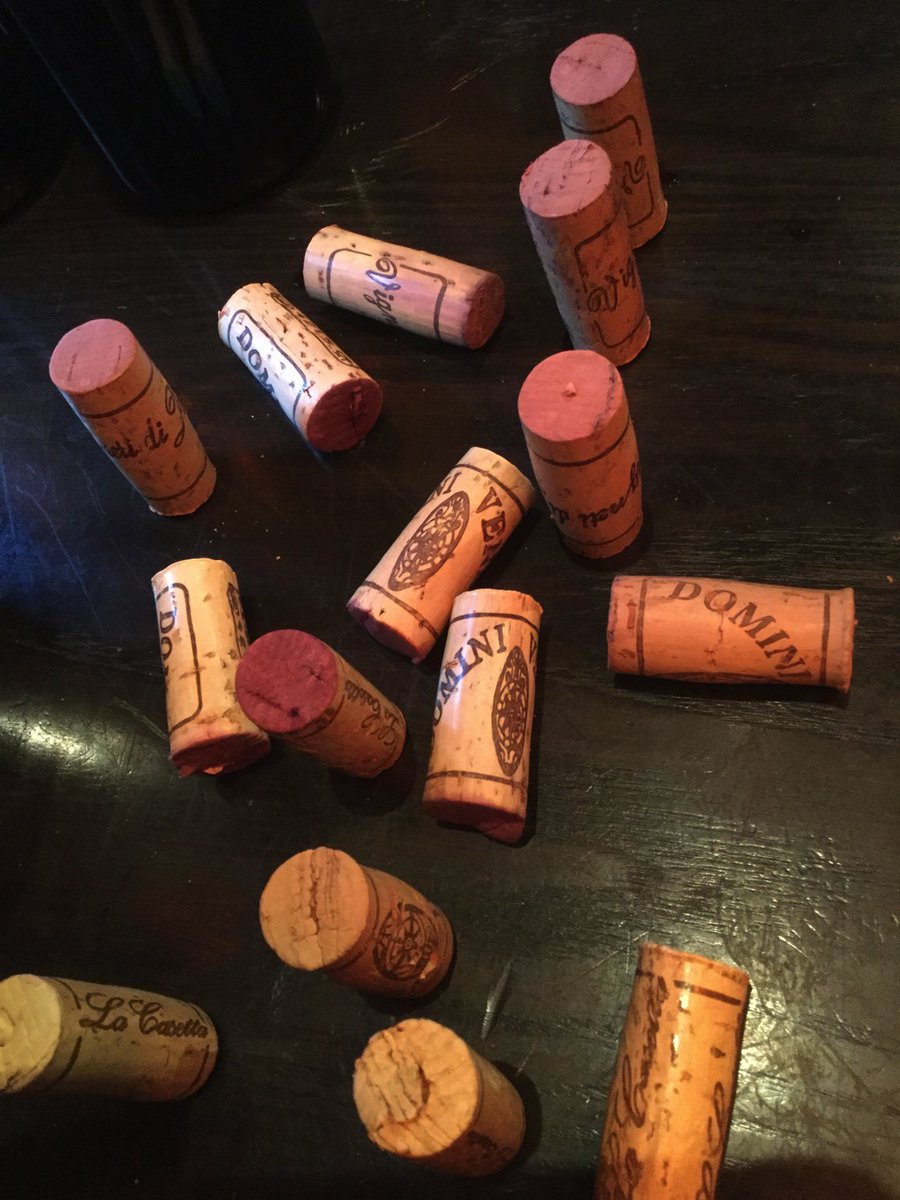From the sundrenched rolling hills and narrow valleys of Veneto in northern Italy to Vancouver. . . . . . .
To properly explore the wine regions of Italy, the world’s largest wine producer, would likely take a person a lifetime. There are so many regions and unfamiliar indigenous grapes. There is so much to discover in even in just one area, such Valpolicella. One of the biggest wine producing regions in Italy, Valpolicella is also well known for its caves that have long been mined for red marble. These limestone, basalt and chalk rich soils have a lot to do with the quality of the grapes grown here.
The grapes that go into these bright and easy drinking blends include Corvina, which provides structure, bitter almond and sour cherry flavours as well as aging potential. Corvione which contributes perfumed and spicy notes, tannins, and is lower in acidity. Rondinella, adds colour, sour cherry, violet and rustic notes, lower tannins and is disease resistant. Both Corvione and Rondinella are well suited for drying. Molinara is another grape that is often used. Lower priced Valpolicella comes from the plains, while the better quality Valpolicella Classico from the hills.
This region is known primarily for four types of wine – Valpolicella, light, brightly flavoured table wines, Ripasso, medium to full bodied, Amarone, bigger, richer, stronger wines made from dried grapes and Recioto della Valpolicella dessert styled wines. Within the first table wine category there are Valpolicella Classico wines and Valpolicella Superiore, which is aged longer and has a slightly higher alcohol level. Then there are Valpolicella Ripasso wines which are the same as Superiore wines but they have spent time on the dried skins of Amarone or Recioto wines. This gives them just that much more character.
The grapes picked for Amarone are among the last to be harvested and are then left to air dry on racks. Over as many as four months, the grapes shrivel and become raisin-like, which concentrates sugars. This method is known as ‘passito’. These are full-bodied rich wines which often have port-like aromas and flavours. These wines should be served with rich meals such as roasted meat or game or served after dinner with a plate of nuts, dried fruit and hard cheeses.
The wineries of northern Italy, the Veneto in particular, have been visiting Vancouver quite a bit in recent years and for good reason. Canada is one of the top importers of Valopicella (the wines from this region), which should come as no surprise as these wines are very food friendly and are very good value.
Today’s presentation featured Cantina Valpolicella Negrar. You will find Cantina Valpolicella Negrar east of Lake Garda and just northwest of the city of Verona. Gianluca Cittadini, export manager of Cantina Negrar, guided us through a presentation of the region, the wines and the winery.
Cantina Negrar, founded in 1933, is one of the major producers in the area. It is a co-op winery made up of 230 members and has almost 1500 acres of vineyards. Daniele Accordini has been the winemaker since 1988.
The hills here vary from 120 to 600 meters and terraced vineyards are common. Pergola, or canopy, training has been traditional in the region. With this method, grapes are picked at head level under a canopy of leaves, so it must all be done by hand. No machine harvesting here. The grapes are typically picked in late September and then spend up to four months drying.
In 1989, Cantina Valpolicella Negrar set out to improve the quality of their wines by focusing on site selection, better viticultural practices, including lower yields, and improved winemaking techniques. This project was called Domini Veneti and the resulting wines carry this label. A typical blend would include 60% Corvino, 15% Corvinone, 15 % Rondinello and 10% of other grapes.
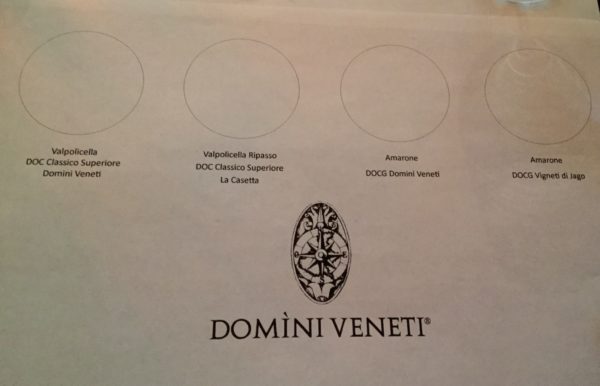
Amarone appeard on the scene in 1939 after a forgotten barrel of Recioto was found and discovered to be dry and and stonger and full bodied (or so legend has it). Recioto, by contrast has a history that goes back 800 years. Cantina Valpolicella Negrar is the home of the original Amarone. Because they are shrivelled, almost raisin like, it takes 4 to 5 kilos of grapes to make one bottle of Amarone. In 2011, Negrar launched the Espressioni Project to feature five styles of Amarone from specific areas.
Cibo Trattoria on Seymour, where well known restaurateur Mark Taylor has just taken over as manager, was the venue for this event (and I am very happy to see that they have the Dames white wine available by the glass). Where else are you going to sample delicious Italian wines, than somewhere that serves equally delicious Italian food? Just like a ‘horse and carriage’, Italian food and wine are made for each other.
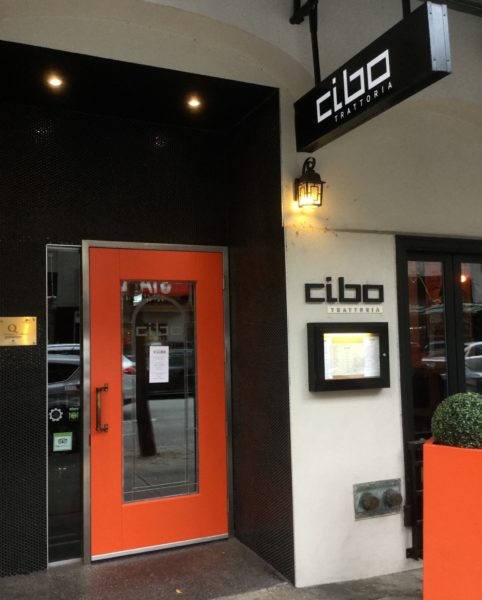
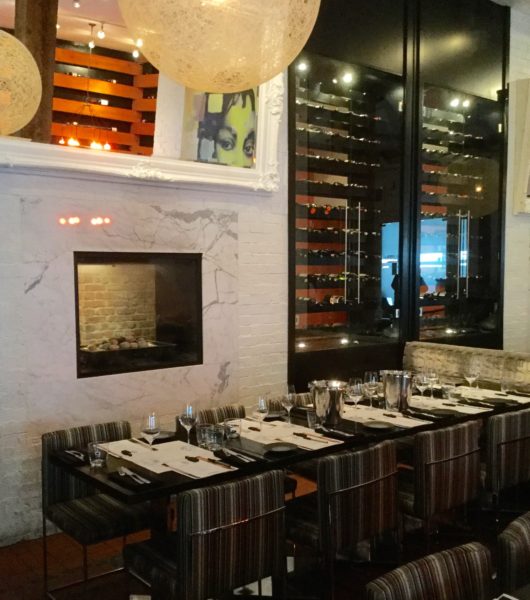
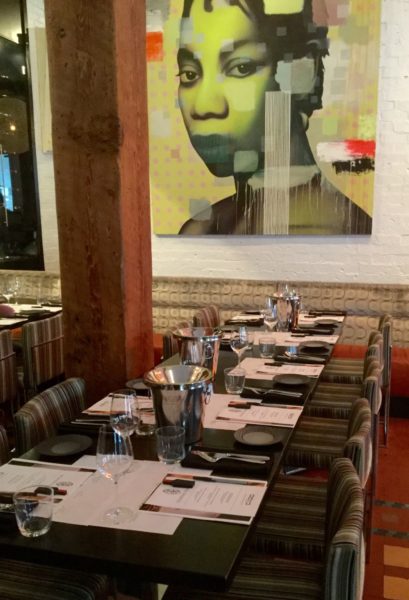
Executive Chef Ryan Byrd and his team prepared the following meal to showcase the wines.
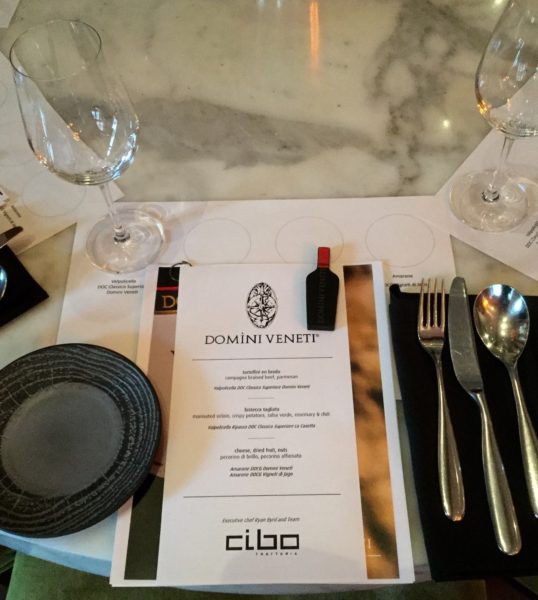
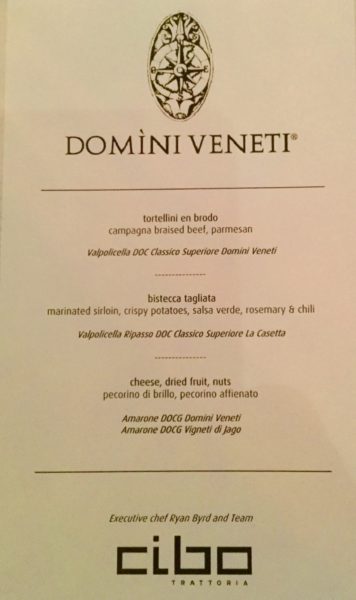
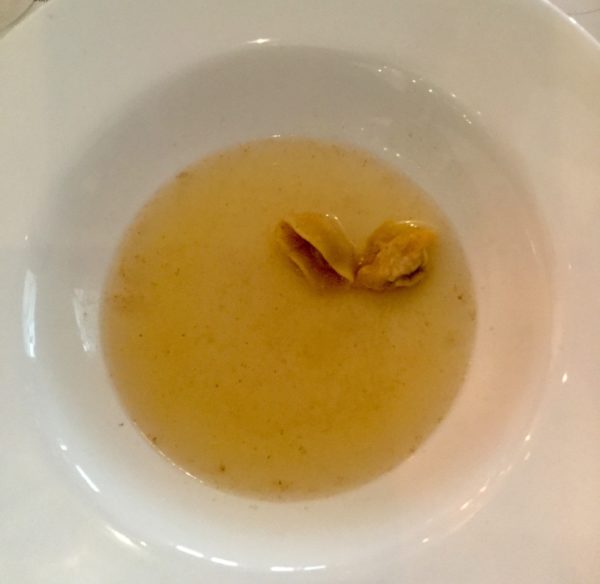
Tortellini en brodo
Campagna brasied beef, parmesan
Wine: Valpolicella DOC Classico Superiore Domini Veneti
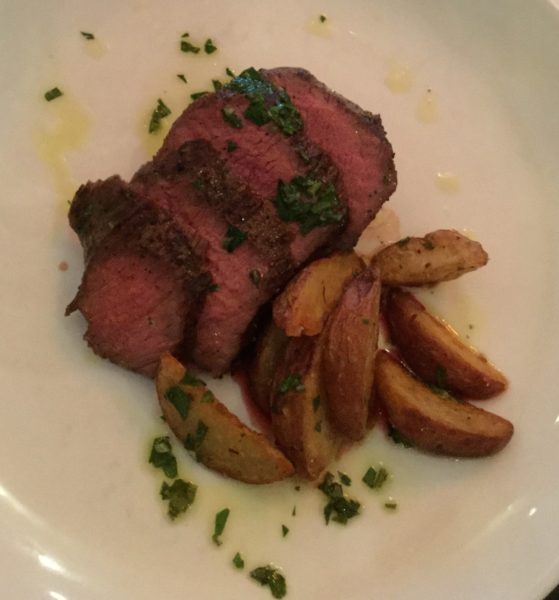
Bistecca tagliata
Marinated sirloin, crispy potatoes, salsa verde, rosemary & chili
Wine: Valpolicella Ripasso DOC Classico Superiore La Casetta
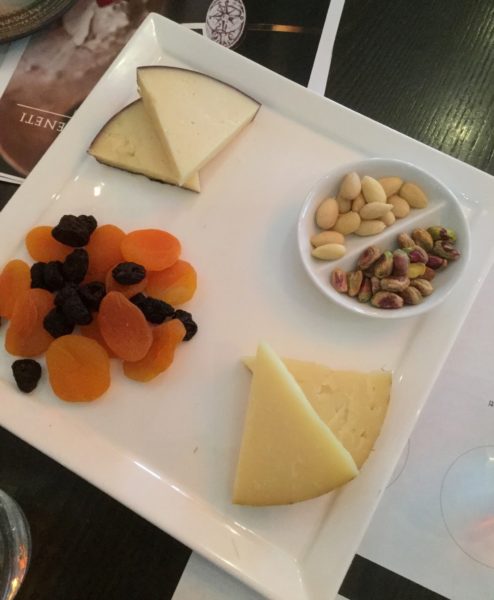
Cheese, dried fruit, nuts
Wines: Amarone Della Valpolicella DOCG Classico Domini Veneti
Amarone Della Valpolicella DOCG Classico Vigneti di Jag
Wine #1
2014 Valpolicella DOC Classico Superiore Domini Veneti 13%
Fifteen to twenty-five year old vines. Garnet red with medium intensity, delicate red fruit, good balance, with medium body. Bright red fruit, especially sour cherry and plum on the palate and a medium-plus finish. Paired nicely with the Tortellini soup as the acidity provided an effective counterpoint to the richness of the broth. Also well suited for pizza or tomato based pastas
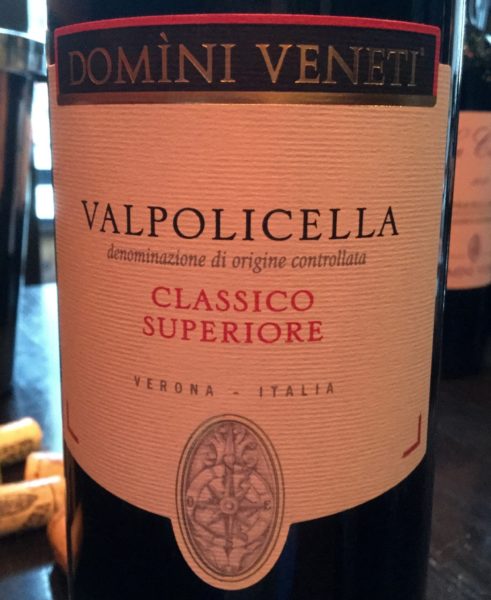
Wine #2
2013 Valpolicella Ripasso DOC Classico Superiore La Casetta 14%
From fifteen year old vines. Four months bottle aging. Garnet red with hints of purple and with medium-deep intensity, the nose is bigger, richer with more layers, well balanced with good structure, Flavours echo the nose followed by a medium-long finish. The flavours complimented the beef sirloin.
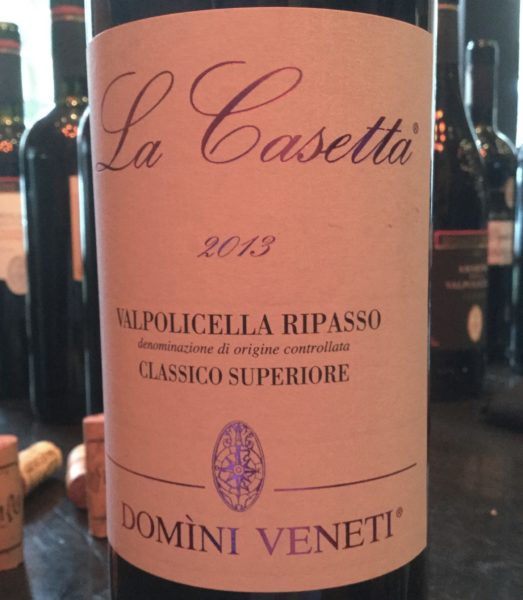
Cheese, nuts and dried fruit are the classic accompanyment for Amarone, though it can also be served with bigger dishes such as braised meats or game.
Wine #3 – some people prefered this one
2012 Amarone Della Valpolicella Classico Domini Veneti 15.5%
Aged in large oak barrels for 18 months and another six to eight months in bottle. Vines are between five and twenty-five years old. On the skins for thirty days. Aged twenty-four months in large Slavonian oak casks and then another six to eight months in bottle. Garnet red with medium deep intensity. Aromas of dried cherries and plums with floral and spice notes. Full bodied. Rich, smooth and velvety, well balanced with firm ripe tannins.
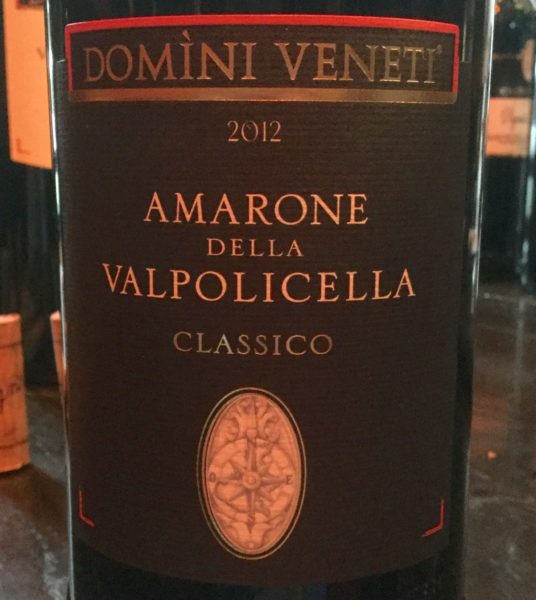
Wine #4 – others prefered this older one, including me
2010 Amarone Della Valpolicella DOCG VClassico Vigneti di Jago 16.5%
This comes from fifteen year old vines and spent a total of thirty-five days on the skins for impressive expraction, then into new French oak for twnety-four months. Elegant and a little more complex with the age. Garnet red in colour with deep intensity. Layered on the nose with dried fruit, vanilla, spice and floral notes. Soft and supple on the palate followed by a lingering finish. Paired better with one of the cheeses.
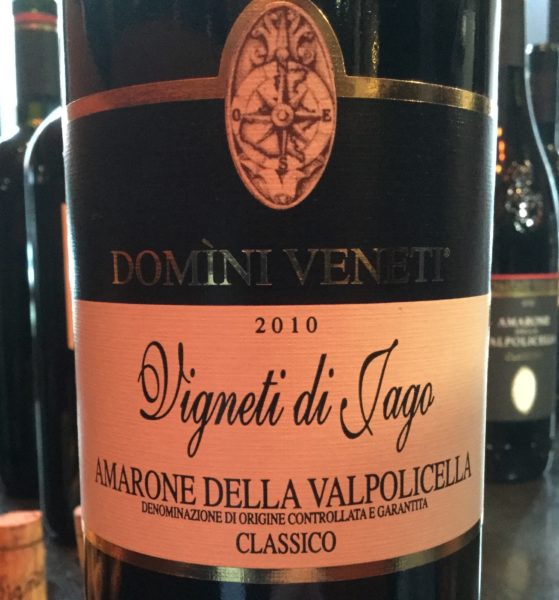
The wines are represented in Vancouver by Vintage Corks. Get in touch with Nicholas Sabanis or Chris Giroux there to find out where you, too, can get these impressive wines. www.vintagecorks.com
Big thanks to the amazing wine promoter and sommelier, Mireille Sauve of The Wine Umbrella for the organizing the day.
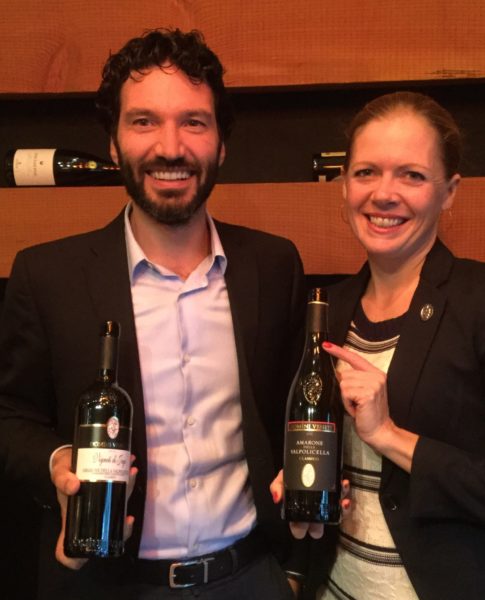
(All photos – Sam Hauck)

